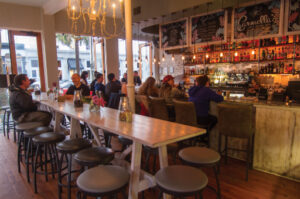Charleston’s Historic Exposition: A Glimpse Back in Time
Charleston, the charming city known for its rich history and vibrant culture, once hosted a splendid event that aimed to breathe new life into its economy during the tumultuous times of the early 1900s. On December 1, 1901, the South Carolina Inter-state and West Indian Exposition opened its doors, marking an ambitious attempt to showcase the city as a burgeoning port of foreign trade.
A Dream to Revitalize
Fast forward to the twinkling winter of 1901, when Charlestonians clung to the hope of brighter days ahead. After facing a series of unfortunate events in the previous century—including a devastating fire, a lengthy federal occupation, and natural disasters like the infamous Great Charleston Hurricane, this expo represented a pivotal moment in the city’s history.
Organized by a dynamic group of local businessmen in 1899, the fair was envisioned to be a beacon of prosperity. They sought inspiration from similar successful trade fairs held in cities like London and New Orleans, with dreams of attracting visitors and investors back to Charleston. They secured approximately 250 acres of land, including the now-popular Hampton Park, and commissioned Bradford Lee Gilbert, a prominent architect, to design the enchanting exhibits.
The Ivory City Rises
Upon completion, the expo was nicknamed the Ivory City due to its stunning cream-colored structures embellished with a touch of Spanish Renaissance flair. Among its treasures was the magnificent Cotton Palace, stretching an impressive 320 feet and boasting a towering 75-foot dome, along with halls that featured agriculture, art, commerce, and more. The grounds were beautifully adorned with statuary and picturesque sunken gardens, complete with bridges and fountains.
The atmosphere buzzed with excitement as guests enjoyed the expo’s many attractions—including a miniature train, carnival rides, and even an exotic Eskimo village. Notable guests included President Theodore Roosevelt and celebrated author Mark Twain, adding a touch of glamour to the event.
Challenges Galore
Despite the grand aspirations, the expo faced multiple challenges that cast shadows over its success. Weather conditions were particularly unkind, with cold and dreary days dampening the spirits of visitors. Many exhibits, particularly those from overseas, arrived late or were poorly arranged, potentially due to delayed federal funding. With financial struggles piling up and only an estimated 675,000 visitors gracing the expo, it became a bitter disappointment.
The financial records painted grim statistics—the expo had cost an astounding $1.25 million to erect, yet revenue barely scratched $313,000. With debts mounting high and only two businesses emerging in the aftermath, Charleston’s grand fair closed its doors after just six months, far short of its anticipated run.
A Legacy of the Past
Though the Ivory City was dismantled soon after—its structures auctioned off for scrap—remnants of this ambitious expo can still be found in Charleston today. Parts of the sunken gardens were preserved, now serving as a tranquil duck pond in Hampton Park. The Lowndes Grove mansion, which once hosted the Women’s Exhibition Hall, has transformed into a popular event venue and a symbol of Charleston’s enduring history.
While the expo may have struggled to achieve its ambitions, its legacy of resilience and hope laid a foundation for Charleston to blossom in the years that followed. Today, as the city continues to embrace its rich culture, we can look back at the South Carolina Inter-state and West Indian Exposition as a testament to the spirit of its people, who have always found ways to rise above adversity.
As we catch a glimpse of partly cloudy skies transforming into an overcast afternoon with breezy winds this November day, let’s remember the spirit of the past and look forward to what lies ahead for this vibrant city!
























